Gary Carter
One of the best things about being a parent is you get the opportunity to remedy the perceived wrongs from your childhood. No matter how small or childish they may seem, we all have ones that linger. One of my lingering issues was my parents not going out and getting the Halloween Pail Happy Meals when my brother and I were children.
You see the Mets winning the World Series wasn’t the only major event of October 1986. I’ve never confirmed this, but I’m pretty sure Mookie Wilson got one of these for his stepson and nephew Preston Wilson. Much like the Mets hopes of winning the World Series the following year, my hopes of getting a McDonald’s Halloween Pail were dashed in 1987. My chances of obtaining one in 1989 were as much as nonstarter as the Mets chances were that year. In 1990, Keith Hernandez and Gary Carter were closer to New York than I was to getting my Halloween Pail. In 1992, there were no hopes for me or the Mets. From there, the Halloween Pails all but disappeared.
That was up until last year when the Halloween Pails re-emerged. Despite Matt Harvey, Jacob deGrom, and Noah Syndergaard not being alive in 1986, these trio of arms led the Mets to the World Series in the same year the Halloween Pails returned. Never underestimate the power of the pails. Like the good Mets fan and father (or petulant child) that I am, I made sure to get all four of them for my son who really had no clue who the Minions were or why he needed four of these pails. That changes this year.
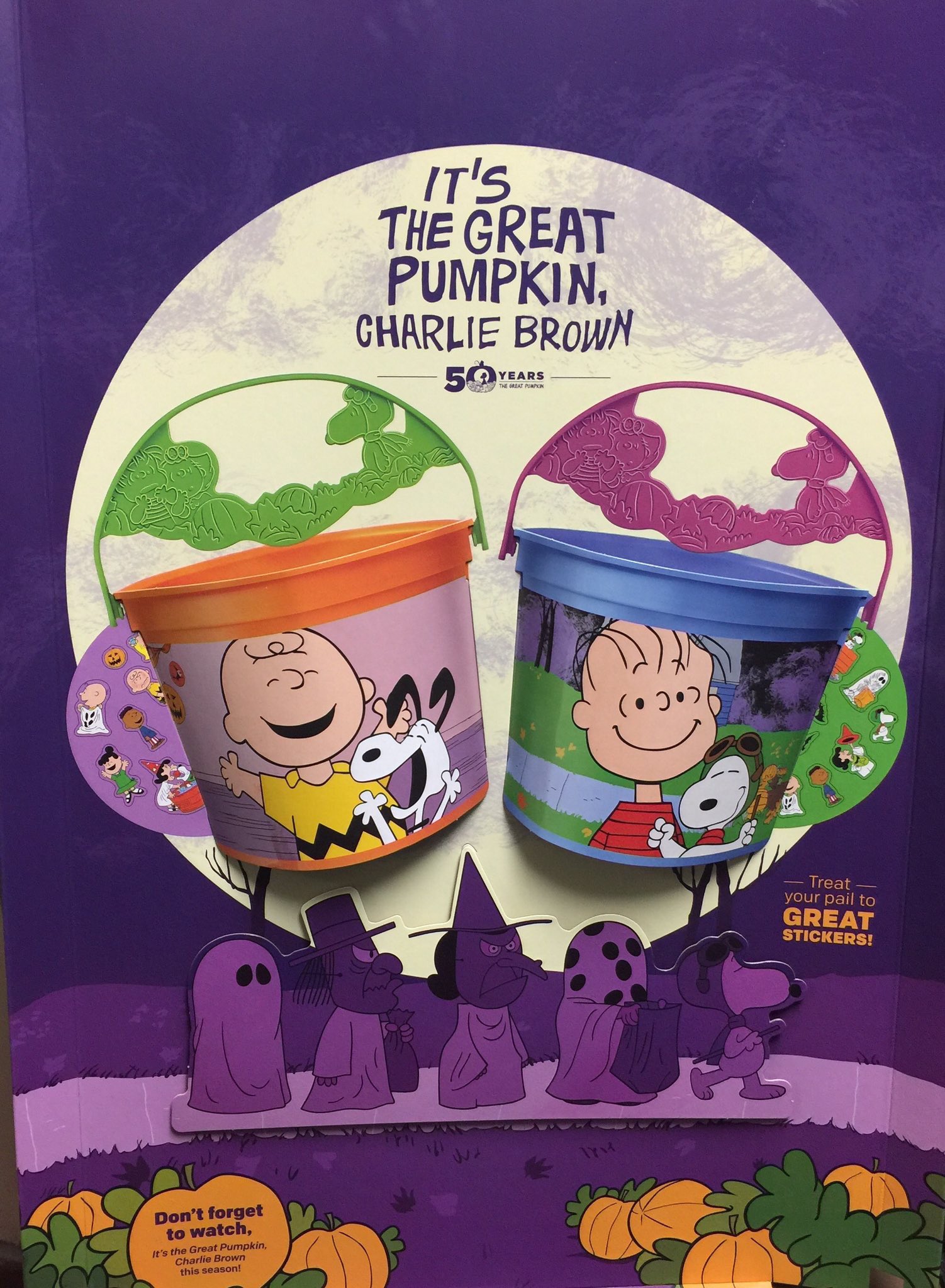
My son loves Peanuts. He has loved them since we took him to see The Peanuts Movie, his first ever movie, for his birthday last year, and since he saw A Charlie Brown Christmas last year. Like any child, he loves Charlie Brown, Snoopy, and the whole Peanuts gang:
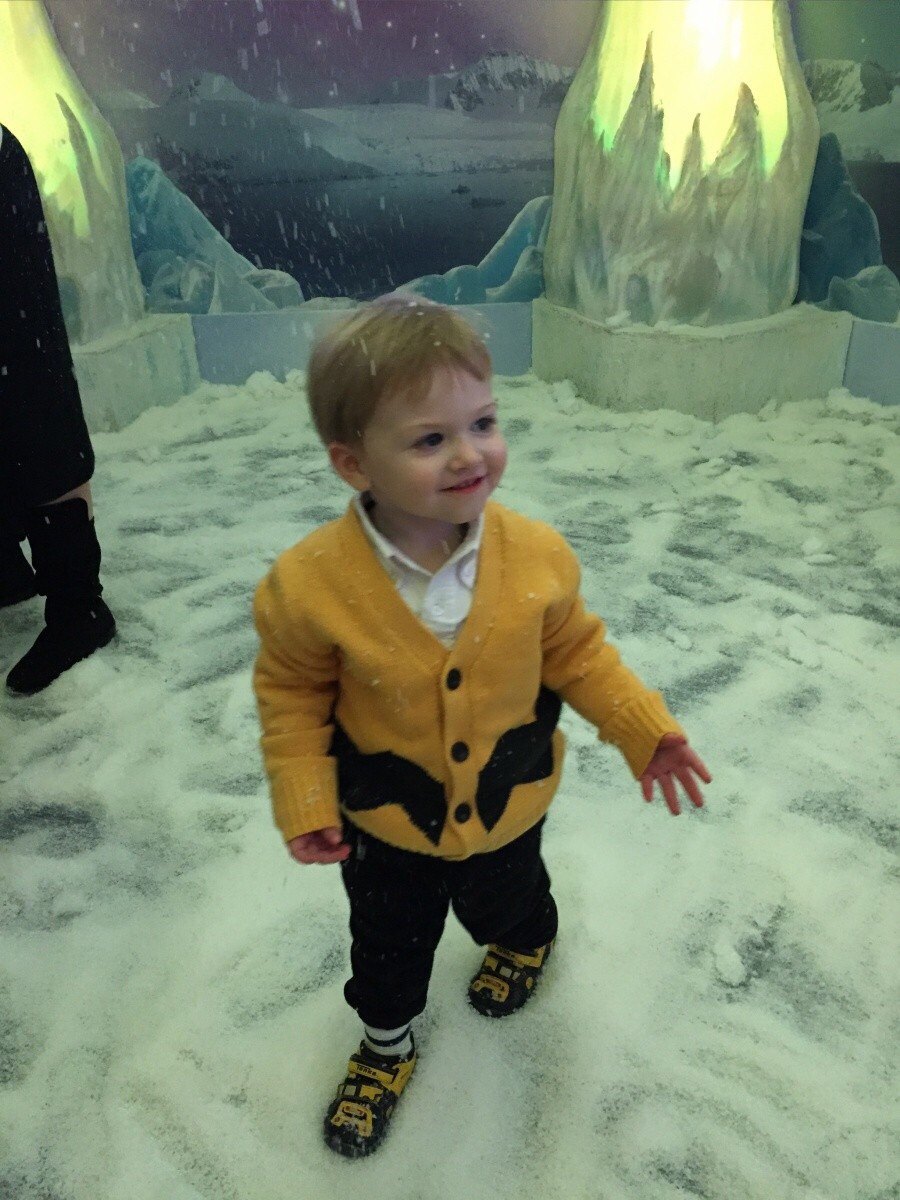
With that, we have now found the intersection where my son’s love of Peanuts and my need to get these Halloween Pails have met in the parenting Venn diagram. With that, I have checked one thing off my parenting bucket list, and I will now seek out curing other perceived wrongs like never getting the chance to attend a Mets World Series victory parade. I guess that one will just have to wait until next year.
To ensure that will happen, I think McDonalds will need to roll out an Avengers Halloween Pail featuring Thor, Captain America (David Wright), Iron Man (Steven Matz), and The Incredible Hulk (Lucas Duda).
By the way, the Great Pumpkin is on tonight:
It's the Great Pumpkin, Charlie Brown airs tonight on @ABCNetwork at 8/7c! pic.twitter.com/e9UOr3mua6
— PEANUTS (@Snoopy) October 19, 2016
Did you ever watch a compilation of the greatest moments in Major Leauge history? If you have, you usually come across Mookie Wilson‘s little roller up the first base line, and as a Mets fan it brings you a smile. If you’re a Red Sox fan, you cringe each and every time you see the ball roll through Bill Buckner‘s legs and watch a delirious Ray Knight cross home plate.
As I learned yesterday, the Mets now have their Buckner moment.
In Game Three of the ALDS between the Rangers and the Blue Jays, the score was tied 6-6 in the bottom of the 10th inning. The Blue Jays had runners at first and second with one out. Russell Martin hit a ball to the third base hole that seemed too slow to turn the double play. That didn’t deter Rougned Odor. After received the throw from Elvis Andrus, he made an offline throw to the first baseman Mitch Moreland, who was unable to handle the ball. While this was occurring reigning AL MVP, Josh Donaldson, did not stop running. He rounded third and headed home. By the time Moreland would pick the ball up and throw home, it was too late. It was just a brutal way for the Rangers to lose the ALDS.
Sure enough, everyone started comparing Donaldson to Eric Hosmer. MLB even did a Vine comparing the two plays:
And now we know that every time a player hustles to make a play, invariably there is going to be a comparison to the infamous Lucas Duda throw home in Game Five of the 2015 World Series.
Duda deserves a better fate that this, as did Buckner. The Mets don’t go to the 2015 World Series without him. As we saw this past season, when Duda suffered a stress fracture in his lower back, the team missed his presence in the lineup, and yes, the team missed his defense at first base. One throw doesn’t change what he has accomplished in his career, nor does it change how much the Mets need him back on the field in 2017.
However, that throw does define him. Years later, all people outside of New York will know about him is he is the guy that made the poor throw. Assuredly, someone is going to invariably blame him for blowing not just the game, but the entire World Series. It’ll be nonsense.
As we saw in 1986, it wasn’t just Buckner. It was Gary Carter, Kevin Mitchell, and Knight not willing to go down without a fight. It was Rich Gedman just missing a pitch, that was somehow ruled a Bob Stanley wild pitch that allowed the tying run to score. Furthermore, it was the Red Sox who blew a 3-0 lead in Game Seven of the World Series. Buckner’s error didn’t help things, but it wasn’t the reason why the Red Sox lost.
Last year, it was Terry Collins allowing Matt Harvey to talk him into pitching another inning. It was then Collins sticking with Harvey too long in that ninth inning before turning to Jeurys Familia. It was David Wright cutting in front of Wilmer Flores, to not only make a weak throw to get the out at first, but also to allow Hosmer to aggressively round an abandoned third base. It was also the Mets offense that didn’t score any runs in the bottom of the ninth or extra innings to lead to that loss.
Like Buckner, Duda didn’t help matters, and he will be forever blamed for the loss. Worse yet, people will forget two pretty good careers by letting their worst moments define them. They’ll have that opportunity because their respective errors will be replayed time and time again. In that sense, Duda has now become the Mets version of Buckner.
In many ways, there’s a cognitive dissonance between honoring the 1986 World Series Champions and celebrating them.
The honoring part is easy. These are the players I grew up adoring. My Dad got me hooked on the Mets by using my love of strawberry ice cream. He kept telling me about this Darryl Strawberry kid coming to the majors as if I knew what the minor leagues were. When Strawberry first came up in 1983, he took me to Shea Stadium for my first game. Strawberry became my first favorite player.
As I got a little older, I became a huge Gary Carter fan. He’s one of the reasons why I wanted to become a catcher. The other was my father and uncles assured me it was a great path to the majors. Even with that, Carter was the reason I wanted to wear the number 8. I idolized him. I idolized everyone on that 1986 team growing up. Honoring them comes easy.
Celebrating doesn’t.
I don’t celebrate the 1986 season for the same reason I don’t celebrate the 1969 season – I was too young. On October 27, 1986, I was only six years old. Now, we can all remember parts of our youth from when we were six. However, there is no way I can recall the 1986 season or the postseason. Looking back on it, my lone memory was the Buckner play. It was my first ever “where were you?” moment.
The answer was in my parent’s basement attending my aunt’s engagement party. I was sitting on my future uncle’s (or future former uncle’s) sister’s lap. My little brother was next to me. Both families were watching on one of those 14″ televisions with the old rabbit ears.
I remember how quiet everything was. I then remember the tension of the moment. I remember the ball going through Bill Buckner‘s legs. I remember everyone going crazy. I remember sharing my tee ball wisdom with my Dad about how a ball shouldn’t do through your legs if you use two hands. That’s it. I remember nothing before, and I don’t remember Game 7. In fact, I have no vivid baseball memories until the 1988 NLCS. Coincidentally, Game 3, the game Jay Howell was ejected for using pine tar, was the same day as the aforementioned aunt’s bridal shower.
Accordingly, it’s difficult for me to celebrate that team, that championship. I had just one fleeting moment amongst well over 175 moments. I had no real attachments to that team. I had just one moment.
I’ll always honor that team as all Meys fans will. They were the greatest Mets team of my lifetime. It was a team full of players I grew up watching and idolizing as only a little boy can. Celebrating them is the hard part. For the most part, 1986 isn’t part of my story as a fan, at least for the most part. When I cheer, I’m cheering the story, not the experience.
I look forward to seeing those players greet the fans tonight. They deserve each and every cheer and accolade that comes their way. It all makes me wish I was a part of it in some small way.
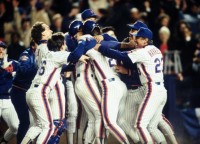
I remember back in 2000, the stories were that Bobby Valentine needed to make the World Series in order to keep his job. The amazing thing is he actually did it.
Just think about everything that had to happen that year for the Mets to make the World Series. First, the Mets had an overhaul of its outfield during the season. On Opening Day, the Mets outfield was, from left to right, Rickey Henderson–Darryl Hamilton–Derek Bell. At the end of the year, it was Benny Agbayani–Jay Payton-Derek Bell. Agbayani was only on the Opening Day roster because MLB allowed the team to have expanded rosters for their opening series in Japan.
On top of that, Todd Zeile was signed to replace John Olerud. Zeile had to become a first baseman after playing third for 10 years. Edgardo Alfonzo had to adapt from moving from the second spot in the lineup to the third spot. The Mets lost Rey Ordonez to injury and first replaced him with Melvin Mora for 96 games before trading him for the light hitting Mike Bordick. More or less, all of these moves worked. Then came the postseason.
A lot happened in the NLDS. After losing Game One, the Mets faced a quasi must win in Game Two. They were leading before Armando Benitez blew a save. I know. I’m shocked too. The Mets regained the lead, and they won the game when John Franco got a borderline third strike call against Barry Bonds. In Game Three, the Mets won on a Agbayani 13th inning walk off homerun. This was followed by Bobby Jones closing out the series on a one-hitter.
The Mets were then fortunate that the Braves lost to the Cardinals in the other NLDS series. The Mets tore through the Cardinals with new leadoff hitter Timo Perez. We saw all that luck run out in the World Series. We watched Zeile’s potential homerun land on top of the fence and bounce back. On the same play, Perez was thrown out at home. In the same game, Benitez blew the save. Unfortunately, there were no more heroics.
We saw this repeated in 2015. The epically bad Mets offense had to have its pitching hold things together until help came. Part of that required the Nationals to underperform while the Mets were fighting tooth and nail just to stay in the race.
In the NLDS, the Mets were on the verge of elimination. They weren’t eliminated because somehow, some way Jacob deGrom pitched six innings with absolutely nothing. The Mets then needed Daniel Murphy to have a game for the ages. He stole a base while no one was looking, and he hit a big homerun. It was part of an amazing run through the postseason for Murphy. Like in 2000, it came to a crashing halt in the World Series.
No matter how good your team is, it takes a lot of luck to win the World Series. Look at the 86 Mets.
In the NLCS, they barely outlasted the Astros. In Game Three, they needed a Lenny Dykstra two run homerun in the bottom of the ninth to win 6-5. In Game Five, Gary Carter hit a walk off single in the 12th to send the Mets back to Houston up 3-2. It was important because they didn’t want to face Mike Scott and his newfound abilities. With that pressure, they rallied from three down in the ninth, blew a 14th inning lead, and nearly blew a three run lead in the 16th inning.
Following this, the Mets quickly fell down 0-2 in the World Series before heading to Boston. After taking 2/3 in Boston, the Mets had to rally in the eighth just to tie Game Six. There are books that can be written not only about the 10th inning, but also Mookie Wilson‘s at bat.
First, they had to have a none on two out rally with each batter getting two strikes against them. For Calvin Schiraldi to even be in the position to meltdown, he had to be traded by the Mets to the Red Sox heading into the 1986 season. In return, the Mets got Bobby Ojeda, who won Game Three and started Game Six. John McNamara removed Schiraldi way too late and brought in Bob Stanley. His “wild pitch” in Mookie’s at bat allowed the tying run to score. You know the rest:
By the way, keep in mind Bill Buckner wasn’t pulled for a defensive replacement. Also, the Mets had to rally late from 3-0 deficit just to tie Game Seven.
We need to keep all of this is mind when setting expectations for the 2016 season. Terry Collins is right when he says World Series title or bust is unfair. We know way too much can happen between now and the World Series. Right now, the only goal should be winning the NL East. If the Mets do that, they have met their reasonable expectations. After that, the Mets are going to need a little luck to win the World Series.
Fortunately, the Mets are carrying a four leaf clover in the form of Matt Harvey, Jacob deGrom, Noah Syndergaard, and Jeurys Familia

With the Mets announcing they are finally retiring Mike Piazza’s number, there have been renewed discussions regarding if there should be any other Mets who should have their number retired. You know the names: Gary Carter, Dwight Gooden, Darryl Strawberry, and, of course, Keith Hermandez.
Instead of arguing the merits of each of these players, I thought I would offer up a new name. Ron Darling.
Looking over Darling’s resume, he was a good, but not a great Met. He was 99-70 with a 3.50 ERA in nine years with the Mets. He won a Gold Glove, and he went to an All Star Game. He had a nice career, and he certainly justified the Mets trading away fan favorite Lee Mazzilli for him. Justifying a trade and having your number retired are two separate distinctions. Admittedly, Darling’s career falls well short of justifying his number retired.
The argument for his number being retired emirates from his current role with the Mets. He’s part of the already iconic Gary, Keith, and Ron. He calls Mets games from the Ralph Kiner TV Booth. That honor was bestowed upon Kiner, an original Met, and Mets broadcasting legend. Kiner was part of the original amazing Mets trio of Kiner, Lindsay Nelson, and Bob Murphy. The radio booth was named after the Hall of Famer Bob Murphy.
Darling is a terrific broadcaster in his own right. He’s so great he was picked up by TBS to do color commentary. As a member of the 1986 Mets and as a broadcaster, Darling has been an important part of Mets history. Since the TV booth already carries the name of Ralph Kiner, and deservedly so, we need to find another way to honor Ron Darling’s rich Mets career. The Mets should retire his number 12.
However, they shouldn’t do it before retiring Keith’s number 17.
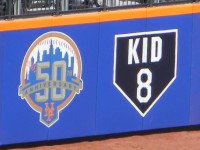
Every single one of us has our favorite players. Growing up, I loved Gary Carter. If I had a blog back in 1997, it would’ve been named ElectGaryCartertotheHallofFameNow.com.Finally, in 2003, The Kid was finally elected in the Hall of Fame. I wanted him to go in as a Met and for him to have his number retired by the team.
There would be controversy over his cap. To understand the controversy, we have to go back in time a bit. There was a time that players were not selecting caps due to the team they felt most closely aligned or where they accomished the most. No, players were selecting caps based upon financial incentives.
Dave Winfield received $1 million to wear a Padres cap on his Hall of Fame plaque when he was inducted in 2001. Winfield going into the Hall as a Padre wasn’t an egregious choice. He started his career there, and he played eight years there as opposed to nine with the Yankees. He did have better numbers with the Yankees, but he was also treated awfully by them. Steinbrenner dubbed him Mr. May to deride his production in a pennant race. Steinbrenner hired gamblers and private investigators to “dig up dirt” on Winfield to get out from under the contact. So no, it’s not surprising Winfield chose the Padres cap and the $1 million.
Winfield wasn’t egregious, but it was the sign of a larger problem. That problem would come to a head with Wade Boggs. There were rumors that Boggs negotiated in his contract that he would enter the Hall of Fame as a Tampa Bay Devil Ray. It forces the Hall of Fame’s hand, and they began the process of selecting player caps, even if it was against a player’s wishes. As we saw with Andre Dawson, it’s a move that benefitted the defunct Montreal Expos.
On the one hand, it’s a move that had to be made. You couldn’t have players and teams negotiating this away in one year contracts towards the end of a player’s career. The Hall of Fame does have some responsibility to preserve history. On the other hand, the Hall of Fame has overstepped its bounds a bit. Remember they did allow Reggie Jackson to enter the Hall of Fame as a Yankee (5 years) as opposed to the Athletics (10 years). They allowed Nolan Ryan to enter the Hall of Fame as a Ranger (5 of his worst years) instead of an Astro (9 years) or an Angel (8 years).
Carter played 12 years for the Expos, and 5 with the Mets. Based on the Jackson/Ryan standard he should’ve had his choice even if Carter was an Expo through and through. However, Carter wanted to go in as a Met. The Hall of Fame decided he would go in as the first Montreal Expos; a decision Carter did not object.
Unfortunately, the decision cost him. The Expos moved to Washington a year and a half after his induction. The franchise almost immediately unretired the number of their first Hall of Famer. Also, it cost Carter his chance of the Mets retiring his number 8.
As we saw with Mike Piazza, the Mets have set an exceedingly high standard for retiring numbers. For their players, the Mets have reserved that honor for players who have entered the Hall of Fame wearing a Mets cap. With one decision made by the Hall of Fame, not by Carter, Carter was cheated of his chance to have his number retired by the Mets. Sadly, even if the Mets reverse course, the day honoring Carter will be melancholy with his untimely death at the all too young age of 57.
If Carter isn’t there to enjoy the honor, I believe the moment has passed. As much as I may have wanted it one day, I don’t think the time is now. If the Carter family feels differently, I certainly would change my tune.
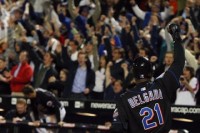
When I was reviewing the 2016 Hall of Fame ballot, one name was conspicuously missing: Carlos Delgado. I knew he retired in 2009 and was never able to play again. I figured it was an error. Nope. Somehow , Delgado only received 3.8% of the vote. How is that possible?
I’m not saying he’s a Hall of Famer. I’m saying it’s up for legitimate debate. Over his career, his 162 game averages were .280/.383/.546 with 38 homeruns and 120 RBIs. THAT’S HIS AVERAGE! Overall, he would finish with 473 homeruns and 1,512 RBIs in 17 years in the big leagues. Look, I know he played in an offensive era, but those numbers are other worldly. I don’t know why 96.2% of the voters couldn’t give him more consideration.
Maybe it’s because he fell one healthy season short of 500 homeruns. Every clean player with 500 homeruns has been elected to the Hall of Fame. Maybe it’s because he spent too much of his career in Canada. Gary Carter seemingly had the same problem, but he had one or two more signature moments with the Mets than Delgado did. Maybe if the Mets win the World Series in 2006 the voters would’ve looked at him differently.
What I do know is Delgado was a feared slugger. When the Mets obtained him in 2006, they went from a .500 club to contenders. Once Willie Randolph slotted him in that cleanup spot, the Mets took off, and Delgado was excelling in his first opportunity to play for a contender. In the 2006 postseason, he went off hitting .351/.442/.757 with three doubles, four homers and 11 RBIs.
I remember him struggling in the beginning of 2008 wondering if this was it for him. He only hit .248/.328/.455 in the first half, and I’m not even sure he was that good. With a .500 team that collapsed the prior year and in need of a spark, especially, with a fired manager, Delgado came in like a raging inferno. In the second half, he hit .303/.386/.606 with 21 homers. He willed the Mets into contention.
Sadly, his career and the stretch of good Mets baseball would end when Delgado needed hip surgery due to bone spurs and a torn labrum. Delgado did not get the chance to go out on his own terms. He deserved better than that much like he deserved more than the paltry 3.8% of the vote he received last year.
In any event, I’m happy Delgado came to the Mets. He retired as one of the top 3 first baseman in Mets history. He may belong to the Blue Jays, but he will always be a Met in my book. Hopefully, the Mets will induct him into the Mets Hall of Fame. It’s not the same as Cooperstown, but it’s something.
Unfortunately, Delgado will no longer be on the ballot. We all lose because of this. We lose because we can’t have intelligent debates over whether or not he belongs in Cooperstown. We lose because we can’t re-live his career highlights. We lose because a great player and a good man was slighted.
There are debates to be had on the players on the 2016 ballot. For the life of me, I can’t wrap my head around the fact that Carlos Delgado isn’t one of them.
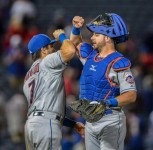
Growing up, watching those 80’s teams I remember going to a game or two when Gary Carter would get out from behind the plate and play on the field. It was a way to give him a day off while keeping his bat in the lineup.
I was thinking of that when I saw a report the Mets were not considering moving either Travis d’Arnaud or Kevin Plawecki out from behind the plate. Personally, I agree that they both help the Mets as catchers. d’Arnaud has hit well, especially for a catcher, while Plawecki has offensive potential. They are also excellent pitch framers. However, I still think it’s important d’Arnaud gets some work to let him play some games at third.
The Plawecki Reason
The first reason is Plawecki is still developing. You don’t want him languishing away on the bench as a backup for 162 game season.
Looking over the 2015 season, the catchers who caught most caught between 112 – 139 games this year. The average amount of games caught between them is about 125 games a season. This leaves Plawecki with only 37 games. If you could find another spot for d’Arnaud once a week, you could have Plawecki catch about two times per week. There’s 26 weeks in the MLB season. If Plawecki can play two games per well, that’ll get him an additional 15 games
It’s still not enough for a developing player, but it’s a lot better.
Injury Factor
d’Arnaud has been named the Mets 2014 and 2015 Opening Day catcher. He didn’t make it through either season without a trip to the DL.
In 2015, they were fluke injuries that landed him on the DL. One injury was a broken pinkie on a hit by pitch. The other was a strained elbow on a play at the plate. I don’t believe d’Arnaud is injury prone. However, it’s getting harder and harder to say that.
Truth is last year he had two separate DL stints costing him around 50 games. With a dismal Mets offense, they had to turn to Plawecki, especially with Anthony Recker and Johnny Monell doing nothing offensively. It’s that reason the Mets will use Plawecki as the backup next year. You don’t want to stunt Plawecki’s development, but d’Arnaud has a bat you don’t want to take out if the lineup.
The best solution is to allow d’Arnaud to play some games at another position to get him some at bats while letting him rest a bit by bit being behind the plate.
The David Wright Factor
Ultimately, I think the reason you let d’Arnaud play some third is because of David Wright. He can’t play more than four games in a row. Assuming he has to take off a game at least once a week, that’s 26 games. He still may need more than that as he re-adjusts to playing over 162 games.
When he returned, he had similar numbers to his whole career. Last year, he hit .289/.379/.434 (yes that includes the right games he played in April). For his career, he has hit .298/.377/.493. Sure, there’s less power, but he’s still a good hitter. It’s a bat they’ll miss when he’s not in the lineup. Right now, it seems the Mets have interest in bringing back Kelly Johnson as a utility player. Presumably, he will play the majority of games Wright doesn’t play.
Johnson is a career .251/.331/.424 hitter. Last year, he hit .250/.304/.414. d’Arnaud hit .268/.340/.485 last year. He’s a better hitter than Johnson. If you’re concerned about defense, Johnson isn’t exactly a Gold Glover. He’s average. There’s no reason d’Arnaud can’t be average out there with some work.
Overall
I think it would help d’Arnaud to stay healthy to get out from behind the plate. It would help Plawecki’s development to get some extra reps out there. It would help the Mets offense to have d’Arnaud’s bat out there when Wright can’t play. This move will help the Mets in 2016 and beyond.
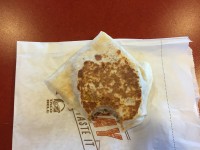
Today was supposed to be the day I was able to put baseball aside for a little bit. Game 7 was supposed to be last night. However, I was reminded of the Mets blowing the World Series because:
Today is the day. Wake up and get your free A.M. Crunchwrap between 7-11 a.m. Rules: https://t.co/yyutdNEGEA pic.twitter.com/iNv9pDuaxY
— Taco Bell (@tacobell) November 5, 2015
The reason for the free AM crunch wraps? It’s because the Royals were able to steal a base during the World Series. The steal that got us free breakfast was Lorenzo Cain stealing second in the sixth inning of Game 1 of the World Series. He would score to bring the game to 3-2.
Overall, the Royals were 6/6 stealing bases off of Travis d’Arnaud in the World Series. This includes a whopping 4/4 in the deciding Game 5. It caused me to sarcastically text my Dad and brother during the game that when we say we wanted d’Arnaud to be like Mike Piazza this isn’t what we meant. Look, I know there are many elements to what causes stolen bases, but a catcher loses the benefit of the doubt when he can’t reach second base.
In any event, it’s hard to say the Mets lost the World Series because of d’Arnaud. There were so many different elements that it’s hard to point a finger at d’Arnaud. I also don’t think it’s a reason to move him out from behind the plate because he does everything else well.
He’s a terrific pitch framer, who makes sure his pitchers get that borderline strike call. As the stats suggest, his work behind the plate gets his pitcher not just the corner but a little off of it. Also, he’s a good hitter. His triple slash line this year was .268/.340/.485. To put that in perspective, another great Mets catcher, the late great Hall of Famer, Gary Carter, hit .262/.335/.439 for his career.
Is d’Arnaud as good as Piazza or Carter? No, but that doesn’t mean he can’t be a good catcher for the Mets. All he needs is a little health and to work on his throwing mechanics a bit. (Note: I’m not comparing him to Mackey Sasser. Not going to happen).
In any event, I had my AM crunch wrap courtesy of a stolen base in the World Series. A World Series the Mets should’ve won. Hopefully, I’ll have one next year because of a Juan Lagares‘ stolen base.
